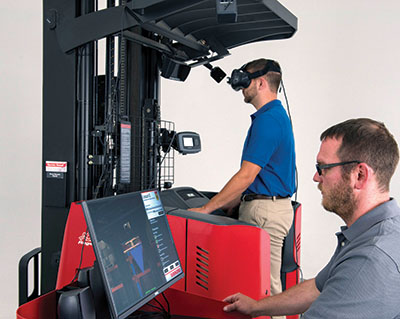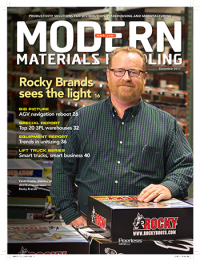Lift Truck Tips: Simple or state-of-the-art fleet, safety comes first
Technology is advancing at an unprecedented pace, and a focus on safety is the best way to keep up.
Every facility is focused on achieving the highest levels of safety, but no two facilities face the same challenges. That’s why Dave Norton, vice president of corporate quality and customer care at The Raymond Corp., says his company’s policy is to listen before offering any suggestions.
“That said, a fairly common response is that the customer is looking for better visibility—what operators are doing, fleet utilization and how those factors might impact overall operations,” Norton says.
Telematics solutions are an obvious approach and can uncover things, like congestion, that are not otherwise apparent. Of course, telematics can also help determine whether a facility has enough—or too many—chargers, equipment and operators. The number of potential improvements can be overwhelming, but starting with a focus on operator accountability is a good way to dodge the “drinking from the fire hose” effect while reaping maximum benefits from data collection.
“The entire industry is going toward data and being able to use it to make good decisions that help everybody, from operators to trainers and technicians,” Norton says. “It feels like the pace of change in materials handling is moving faster than it has in 30 years—the speed at which technologies, data and training are all coming together.”
Given the rapid advances, perhaps the biggest danger is assuming a fleet and its operators are already at optimal performance.
“Even a customer who tells us they have a good handle on things is typically shocked by the amount of waste in their processes when they connect to a telematics system,” Norton says. “Operators quickly realize they can’t do the things they did in the past.”
He offers the example of a customer who gained visibility into their operating environment and noticed their overall forklift performance was below expected levels. They discovered operators were driving over curbs and were able to address the issue with operators. In addition to operator behavior, warehouse conditions can be uncovered with telematics by identifying reduced performance resulting from the facility itself; for example some expansion joints are too big, or there may be cracks in the floor reducing overall productivity.
“With telematics, now the customer can see and fix those problems,” Norton says. “As for visibility into operator behaviors, customers appreciate improved accountability. Nobody can simply blame something on the third shift anymore.”
Norton says virtual reality training tools are emerging as a powerful way to help establish or reinforce safe driving habits. By immersing operators in real-life operating environments and capturing detailed records of their performance, customers can train, remediate or further develop operator skills.
“Many customers are very excited to allow associates the opportunity to advance,” Norton says. “It’s a tool to learn a new lift truck and be ready when the opportunity arises. Studies show it’s a great way to complement classroom training.”

Article Topics
Lift Truck Tips News & Resources
Overlooked no more: The importance of lift truck inspections Lithium transition: It’s all about the outcomes Safety for automatic guided vehicle (AGV) environments Assessing the move to lithium Leasing’s fleet management upside Managing for lift truck operator safety Narrow aisle success: Think systems, then trucks More Lift Truck TipsLatest in Materials Handling
NetLogistik partners with Vuzix subsidiary Moviynt to offer mobility solutions for warehouses Materials Handling Robotics: The new world of heterogeneous robotic integration Lucas Watson appointed CSO for Körber’s Parcel Logistics business in North America Hyster recognizes Dealers of Distinction for 2023 Carolina Handling names Joe Perkins as COO C-suite Interview with Keith Moore, CEO, AutoScheduler.AI: MODEX was a meeting place for innovation Walmart deploying autonomous lift trucks at four of its high-tech DCs More Materials HandlingAbout the Author
Subscribe to Materials Handling Magazine

Find out what the world's most innovative companies are doing to improve productivity in their plants and distribution centers.
Start your FREE subscription today.
April 2024 Modern Materials Handling

Latest Resources












